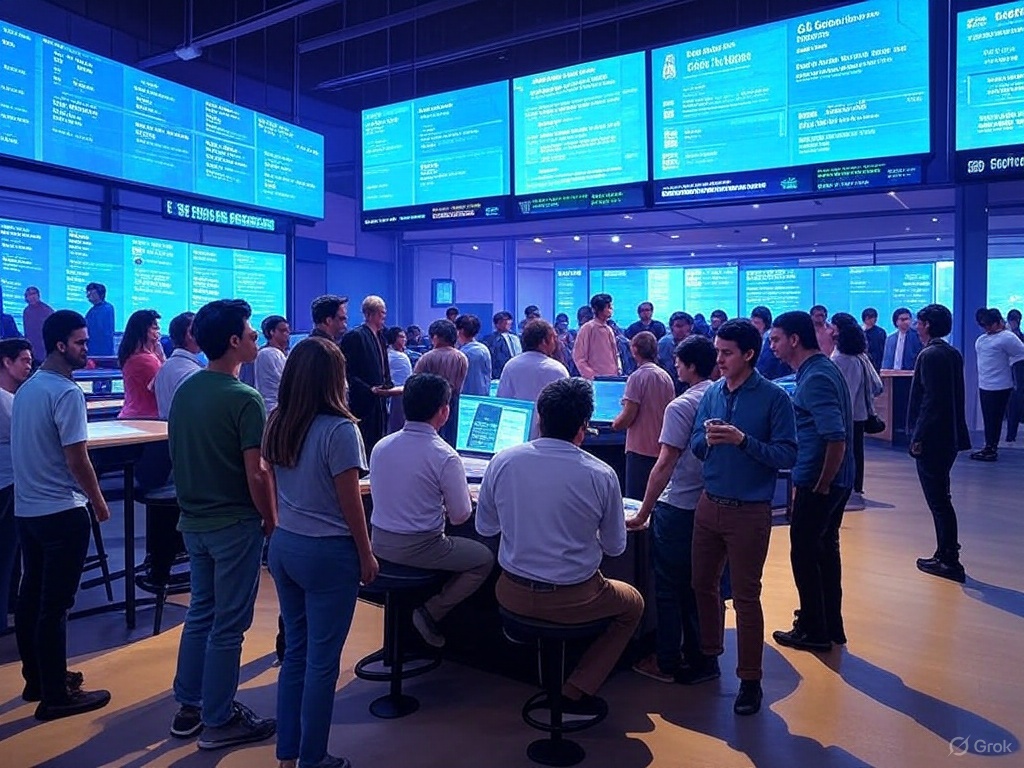In a move that’s sending ripples through the Web3 and financial worlds, Robinhood has unveiled its latest innovation: a Prediction Markets Hub integrated into its app. Launched on March 17, 2025, through its futures-focused subsidiary Robinhood Derivatives, this new feature marks a significant step in the platform’s evolution from a stock-trading darling to a multifaceted powerhouse embracing the decentralized ethos of Web3.
Partnering with KalshiEX LLC, a Commodity Futures Trading Commission (CFTC)-regulated exchange, Robinhood is rolling out this hub across the U.S., offering users the chance to trade contracts on real-world event outcomes. From the upper bounds of the Federal Reserve’s target interest rate in May to the nail-biting finishes of the men’s and women’s NCAA basketball tournaments, the hub promises to blend finance, speculation, and entertainment in a way that’s quintessentially Web3—accessible, engaging, and boundary-pushing.
This isn’t Robinhood’s first flirtation with prediction markets. The platform dipped its toes into the waters last October with political event contracts, letting select users wager on the U.S. presidential race—a move that paid off when platforms like Kalshi and Polymarket accurately foresaw Donald Trump’s victory, outpacing traditional polls. That success, coupled with a staggering $4 billion in election-related trading volume across major platforms by November 2024, underscored the growing appetite for these markets. Now, Robinhood is diving in headfirst, expanding its offerings to cover politics, economics, and sports, with plans to broaden the scope even further.
“We believe in the power of prediction markets,” said JB Mackenzie, Robinhood’s VP and General Manager of Futures and International. “They sit at the intersection of news, economics, politics, sports, and culture—offering a unique lens into public sentiment and market dynamics.” It’s a sentiment that resonates deeply in the Web3 space, where decentralized platforms like Polymarket have already proven the disruptive potential of crowd-sourced forecasting.
The timing couldn’t be more poetic. Just days before this launch, on March 13, Robinhood flexed its crypto muscles by listing memecoins like PENGU, PNUT, and POPCAT—joining heavyweights like Dogecoin on its roster. With crypto revenues soaring 700% year-over-year in Q4 2024, fueled by a Trump-driven market surge, the company is clearly leaning into the Web3 zeitgeist. The Prediction Markets Hub feels like a natural extension of this strategy, merging the speculative thrill of crypto trading with the tangible stakes of real-world events.
Yet, this bold leap hasn’t come without its hurdles. Robinhood’s earlier foray into Super Bowl betting in February 2025 was swiftly curtailed after a CFTC request to restrict access, highlighting the regulatory tightrope these markets walk. Critics have long debated whether prediction markets are innovative financial tools or glorified gambling dens—a tension that’s only heightened as their popularity explodes. Still, Robinhood seems undeterred, emphasizing its commitment to compliance and collaboration with the CFTC to “promote innovation in the futures, derivatives, and crypto markets.”
For Web3 enthusiasts, this launch is more than just a new feature—it’s a signal of mainstream adoption. Prediction markets, with their roots in decentralized platforms, are finding a home in a retail trading giant, bridging the gap between crypto natives and everyday investors. As Robinhood’s stock surged 8% on the Nasdaq following the announcement, the message was clear: the market sees this as a winning bet.
With contracts already rolling out and the NCAA’s March Madness tipping off, Robinhood’s Prediction Markets Hub is poised to capture the imagination of traders and spectators alike. In a world where Web3 is rewriting the rules of finance, this move positions Robinhood as a player unafraid to bet big on the future—one event at a time.












